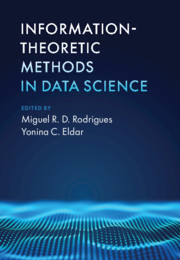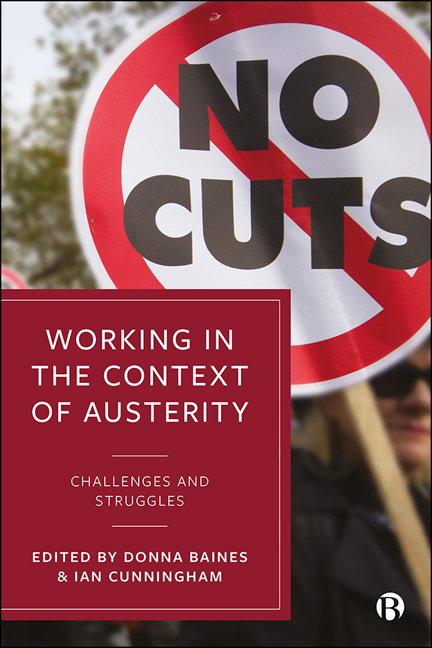Refine search
Actions for selected content:
48581 results in Computer Science
Grammar instruction through multinational telecollaboration for pre-service teachers
-
- Article
-
- You have access
- Open access
- HTML
- Export citation
Powers of paths in tournaments
- Part of
-
- Journal:
- Combinatorics, Probability and Computing / Volume 30 / Issue 6 / November 2021
- Published online by Cambridge University Press:
- 23 March 2021, pp. 894-898
-
- Article
- Export citation

Information-Theoretic Methods in Data Science
-
- Published online:
- 22 March 2021
- Print publication:
- 08 April 2021
FOR BETTER AND FOR WORSE. ABSTRACTIONISM, GOOD COMPANY, AND PLURALISM
- Part of
-
- Journal:
- The Review of Symbolic Logic / Volume 16 / Issue 1 / March 2023
- Published online by Cambridge University Press:
- 22 March 2021, pp. 268-297
- Print publication:
- March 2023
-
- Article
- Export citation
A NOTE ON THE LEARNING-THEORETIC CHARACTERIZATIONS OF RANDOMNESS AND CONVERGENCE
- Part of
-
- Journal:
- The Review of Symbolic Logic / Volume 15 / Issue 3 / September 2022
- Published online by Cambridge University Press:
- 22 March 2021, pp. 807-822
- Print publication:
- September 2022
-
- Article
-
- You have access
- Open access
- HTML
- Export citation
INDEPENDENCE PROOFS IN NON-CLASSICAL SET THEORIES
- Part of
-
- Journal:
- The Review of Symbolic Logic / Volume 16 / Issue 4 / December 2023
- Published online by Cambridge University Press:
- 22 March 2021, pp. 979-1010
- Print publication:
- December 2023
-
- Article
- Export citation
BISIMULATIONS FOR KNOWING HOW LOGICS
- Part of
-
- Journal:
- The Review of Symbolic Logic / Volume 15 / Issue 2 / June 2022
- Published online by Cambridge University Press:
- 22 March 2021, pp. 450-486
- Print publication:
- June 2022
-
- Article
- Export citation

Working in the Context of Austerity
- Challenges and Struggles
-
- Published by:
- Bristol University Press
- Published online:
- 18 March 2021
- Print publication:
- 09 November 2020
Contents
-
- Book:
- Practical Smoothing
- Published online:
- 25 February 2021
- Print publication:
- 18 March 2021, pp vii-x
-
- Chapter
- Export citation
Frontmatter
-
- Book:
- Practical Smoothing
- Published online:
- 25 February 2021
- Print publication:
- 18 March 2021, pp i-iv
-
- Chapter
- Export citation
Appendix E - Mixed Model Equations
-
- Book:
- Practical Smoothing
- Published online:
- 25 February 2021
- Print publication:
- 18 March 2021, pp 176-181
-
- Chapter
- Export citation
6 - Complex Counts and Composite Links
-
- Book:
- Practical Smoothing
- Published online:
- 25 February 2021
- Print publication:
- 18 March 2021, pp 103-113
-
- Chapter
- Export citation
4 - Multidimensional Smoothing
-
- Book:
- Practical Smoothing
- Published online:
- 25 February 2021
- Print publication:
- 18 March 2021, pp 59-83
-
- Chapter
- Export citation
Appendix B - P-splines and Competitors
-
- Book:
- Practical Smoothing
- Published online:
- 25 February 2021
- Print publication:
- 18 March 2021, pp 161-167
-
- Chapter
- Export citation
Appendix G - The Website
-
- Book:
- Practical Smoothing
- Published online:
- 25 February 2021
- Print publication:
- 18 March 2021, pp 184-187
-
- Chapter
- Export citation
On symmetric intersecting families of vectors
- Part of
-
- Journal:
- Combinatorics, Probability and Computing / Volume 30 / Issue 6 / November 2021
- Published online by Cambridge University Press:
- 18 March 2021, pp. 899-904
-
- Article
- Export citation
Index
-
- Book:
- Practical Smoothing
- Published online:
- 25 February 2021
- Print publication:
- 18 March 2021, pp 196-200
-
- Chapter
- Export citation
Appendix D - Array Algorithms
-
- Book:
- Practical Smoothing
- Published online:
- 25 February 2021
- Print publication:
- 18 March 2021, pp 174-175
-
- Chapter
- Export citation
Preface
-
- Book:
- Practical Smoothing
- Published online:
- 25 February 2021
- Print publication:
- 18 March 2021, pp xi-xii
-
- Chapter
- Export citation
Appendix C - Computational Details
-
- Book:
- Practical Smoothing
- Published online:
- 25 February 2021
- Print publication:
- 18 March 2021, pp 168-173
-
- Chapter
- Export citation
 , which is best possible.
, which is best possible.
